May 31, 2025 | 09:00 GMT +7
May 31, 2025 | 09:00 GMT +7
Hotline: 0913.378.918
May 31, 2025 | 09:00 GMT +7
Hotline: 0913.378.918
The Ministry of Agriculture and Rural Development (MARD) of Vietnam and the Chinese General Administration of Customs On October 31 signed a protocol requiring phytosanitary procedures for fresh bananas exported from Vietnam to China. This is regarded as an opportunity for Vietnamese farmers to increase added value, improve income and step by step participate in the global supply chain.
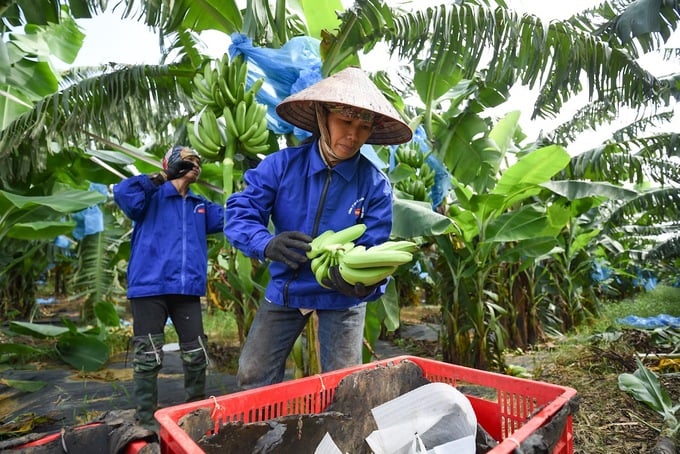
The signing of a protocol on fresh bananas exports to China creates many values. Photo: Tung Dinh.
Dr. Ngo Xuan Nam, Deputy Director of SPS Vietnam Office, assessed that protocol helps create 3 values. First is to make the market transparent, reduce the existence of information ambiguity, as well as small-scale export. Secondly, the protocol will promote work of growers, growing areas, packing and commercial enterprises that have standardized production. This is a premise for the agricultural sector in particular and society in general to reorganize production in a more methodical and responsible manner, contributing to raising the scale in the direction of industrialization and modernization.
Thirdly, Vietnamese agricultural products will gradually improve quality and increase value to meet the requirements of traceability, food hygiene and safety and at the same time have more opportunities to access new fastidious markets.
Besides, people and domestic businesses need to raise their awareness about food safety control, pest control and activities of farming and packing facilities.
"To meet the requirements, we must always be in a state of readiness, from the cultivation process, factory cleaning to the workers training. The aim is to create products with traceability, helping consumers feel more secure when choosing them", said the SPS Vietnam Office Deputy Director.
As the world economy is facing inflation affecting purchasing capacity export, activities in general and agricultural exports in particular need to promptly adapt, and find more potential markets, according to Mr. Vu Ba Phu, Director of the Trade Promotion Department (Ministry of Industry and Trade).
Mr. Phu pointed out two issues after Vietnam signed the protocol. He recommends commodity associations to operate periodically, maybe once a month, to exchange information and create a bridge connecting domestic exporters with the overseas trading system.
On the business side, Mr. Phu suggested restructuring to catch up with the trend of green consumption, green trade and green growth - which is gradually becoming more and more popular.
"Agricultural producers have to both improve their operational efficiency and participate more in high-value chains around the world," emphasized Mr. Phu.
Vietnam has 154,000 hectares of bananas with an output of 2.3 million tons
According to Mr. Nguyen Quoc Manh, Head of Industrial Plants - Fruit Trees Office, Department of Cultivation (CoP), bananas are grown in the largest area and output in our country, with a fairly stable growth rate for many years.
Currently, the banana area in the whole country is about 154,000 hectares, with an output of more than 2.3 million tons (accounting for about 14.5% of the country's fruit tree area). In the North, the banana area is estimated at 70,300 hectares, with an output of 1.2 million tons.
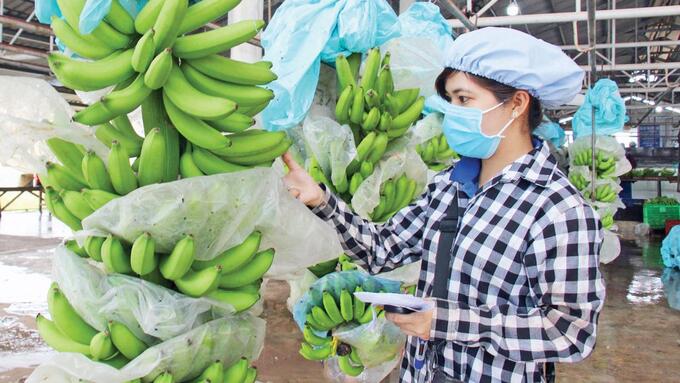
Bananas are the latest fresh fruit after passion fruit and durian that has been signed in the protocol with China.
In the southern provinces, banana trees have the second largest area after mango, but the output is ranked first with a stable growth rate over the years. Up to now, the whole southern region has 83,800ha with an output of 1.1 million tons. Regarding distribution, Mr. Manh said, the major banana-producing areas are located in provinces/cities of Hanoi, Phu Tho, Lai Chau, Son La, Thanh Hoa, Nghe An, Quang Tri, Dong Nai, Tra Vinh and Tien Giang (with over 3,000 ha/province).
In the coming time, the CoP plans to develop about 165,000-175,000ha of bananas with an output of 2.6-3 million tons. To effectively and sustainably develop banana trees, it is necessary to continue researching, selecting, and increasing the use of high-yielding, good-quality, disease-resistant varieties (especially Panama yellow leaf disease).
In addition, it is necessary to restore and transfer specialty banana varieties in association with the local OCOP development program, synchronously apply advanced, organic and safe production processes in production, attach importance to the technique of packing, intercropping, anti-dumping and promote mechanization in concentrated banana production.
According to the Import and Export Department (Ministry of Industry and Trade), in the first nine months of 2022, the total export turnover of vegetables and fruits reached USD2.4 billion. Notably, exports of bananas and durians increased in value in the first eight months of the year, mainly to China. Statistics from the General Department of Customs show that in the first 8 months of 2022, banana export value reached USD237 million, up 28% over the same period in 2021.
According to some fruit and vegetable experts, Vietnam is geographically closer to China than other countries, which is a favorable factor.
China's banana areas have decreased due to the cost of agricultural inputs, land rental and labor costs that have made farmers reluctant to grow, leading to an increase in import market shares.
Not only that, over the past time, Panama disease has impacted on the quality of Chinese fresh bananas making it decrease sharply due to the use of disease-resistant varieties.
To increase market share, Vietnamese banana products need to improve quality, design, control toxic chemical residues and ensure food safety as required by China.
Along with the granting of planting area codes and processing and packing facilities approved by the General Department of Customs of China, Vietnam's banana products have very good competitiveness even with other countries in the region which have products comsumed in such a market of more than 1.4 billion people.
Translated by Linh Trang
/2025/05/30/5010-5-173638_943.jpg)
(VAN) On May 29, at the GO! My Tho Trading Center, the Tien Giang Department of Industry and Trade, in collaboration with Central Retail Corporation, held the opening ceremony of the 3rd Fruit Festival 2025.
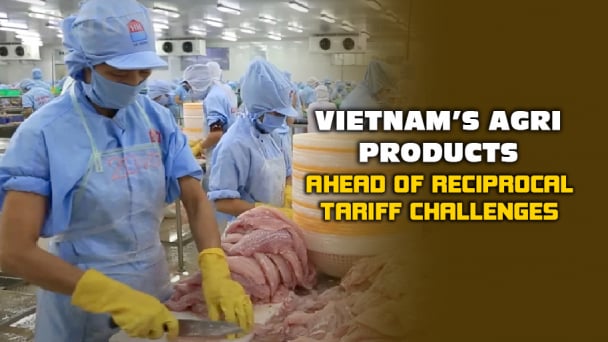
(VAN) Reciprocal tariffs are exerting pressure on U.S. exports, prompting Vietnamese firms to shift their focus to Muslim markets, Thailand, and Brazil.
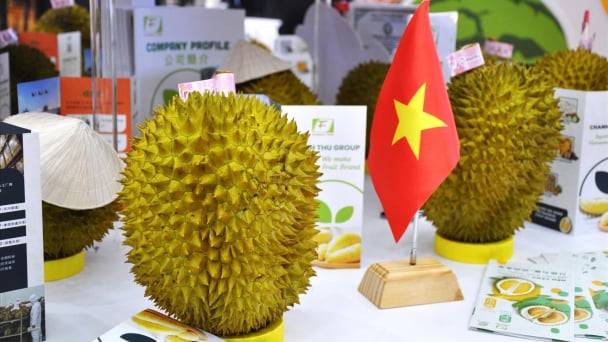
(VAN) A free booth for two years at Xinfadi, Beijing's largest wholesale market, will be allocated to Vietnam's agricultural products.
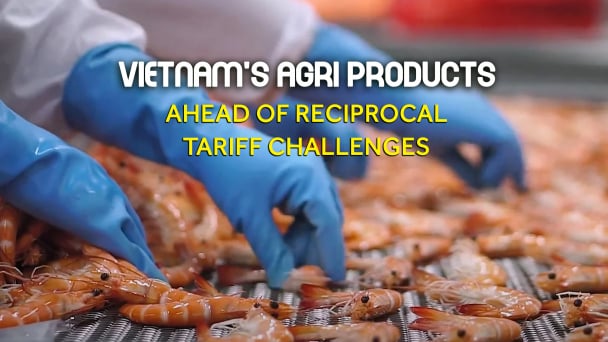
(VAN) Vietnamese shrimp exporters are actively looking for alternative markets and accelerating shipments to the United States in response to the pressure of impending reciprocal tariffs. This is occurring during a temporary tariff suspension.
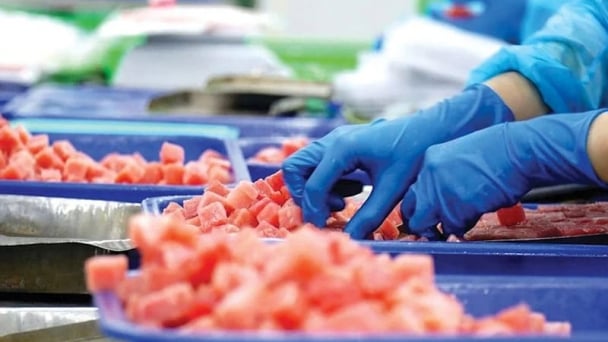
(VAN) The import-export turnover between Vietnam and Singapore rose amid a trade rebound, with machinery, electrical equipment, and fuels making up the majority of the transaction value.

(VAN) Director General of the General Administration of Customs of China, Ms. Sun Mai Jun, has pledged to implement measures that will ease the import process for Vietnamese agricultural products.
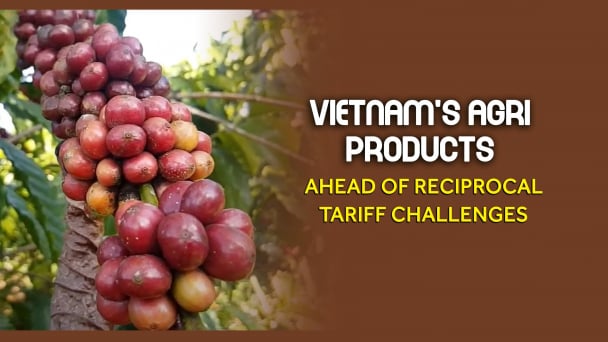
(VAN) Although Vietnam is still increasing its coffee exports, the industry is currently in the process of determining market strategies in response to the U.S. imposition of reciprocal tariffs.